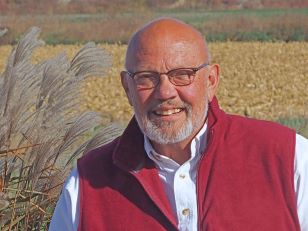Once upon a time, right here where I’m sitting, Holland Township, Sioux County, Iowa, got sectioned into homesteads by a gang of Hollanders up from the Pella area, looking for cheap land and space enough for another colony of Dutch Calvinists, a new colony for tons of new wooden shoes just off the boat, ja.
They’d set boundaries for what land they’d wanted for themselves and for a town, then they returned to Sioux City to fairly distribute that land among themselves. They did so, went back east, having achieved exactly what they’d intended to do.
Then later, two wagon trains came up north and out west. It was October, 1868.
October may well be the most beautiful month to live in Siouxland. Summer’s reach hasn’t drawn back, fall colors are burnished and warm, hosts of prairie flowers are swaying in the warm sun and even winds. October must have made the place seems a paradise–all kinds of birds and animals, streams full of game fish.
Here’s how the slightly rapscallion Charley Dyke describes it in his History of Sioux County:
The prairie swarmed with old and young prairie chickens, quail, killdeer, larks, plovers, curlews, native sparrows, song sparrows, cranes and many other s and the trees along the river were musical with nesting song birds. The sloughs were alive with ducks of different kinds and jingled with the song of the bobolink. Yellow headed blackbirds hovered over the tall grass and red-wing blackbirds hovered over the tall grass and redwing blackbirds hung and ukelelied on the reeds. A brilliant sun made everything simmer and glimmer and glisten.
This forever prairie, grass as far as you could see, had to be cut, opened up for habitation. Had to be. So these folks set the plow behind an ox or a horse and tried their best to outline a home place, a spot in the vacant grassland they’d somehow come to call their own. That was the very first step: outline our property. The Yankton must have considered them plain crazy, but most of these white folks had come from nothing or very little, so outlining what glory was theirs had to have been pure joy.
Imagine this. In October the tall-grass prairie, a forest of native glory, stood so high it could out-tall the horses. People literally got lost taking a walk. For years already, some had called the tall-grass prairie an ocean because the constant winds blowing over the grasses made waves that turned the country as endlessly wavy as the Atlantic.
So once those first white settlers outlined their homesteads and started to think about sod houses or where they’d get sufficient wood for proving up their claims, the second important task was turn those oxen west and north to the Floyd River and the West Branch, the only breaks, the only recognizable diversion from an oceanic grassland.
Those furrows weren’t highways really. Those first white settlers had far too much work to travel anywhere leisurely. Those furrows were lifelines to the safety zones because if were lost and got to the river, at least you knew where you were. Those pioneers cut furrows into virgin ground just in case you or your spouse or your kids got head-over-heels in the lush prairie, so mixed up you lost your wits and way, nothing around but tall-grass prairie.
I’m sitting right here in the southeast corner of Holland Township, Sioux County, Iowa, 146 years later. In an awakening dawn just outside my window, the land slopes gently to the Floyd River maybe an eighth of a mile north. I could walk there in minutes. I’d like to imagine that once upon a time one of those lifelines ran right here through flowery prairie grass, a single line of unearthed dirt running to the bank of the river so anyone who happened along could know where they were.
We may well be the wealthiest rural county in all of Iowa’s 99 these days. There are more confinements per square mile than anywhere else in the state, it seems. A friend of mine claims that the company he hauls cement for says there’s already sixteen new ones going up in the neighborhood just this summer. Lots of work.
But with all that wealth, it’s a crying shame we have nothing to remember how rich this world was when paleface Hollanders determined it would be their own new colony, when they put the plow to ground no one had ever farmed, when they drained the sloughs and muddied the rivers.
It would be nice to be able to imagine more easily what this creation looked like back then, this ocean of grass strewn with lifelines running down the hill to the river, just in case we get lost. It’d be nice to have a whole section of nothing but tall-grass prairie.
It’d be nice. I don’t know–I think it might also be right, its own kind of lifeline.


